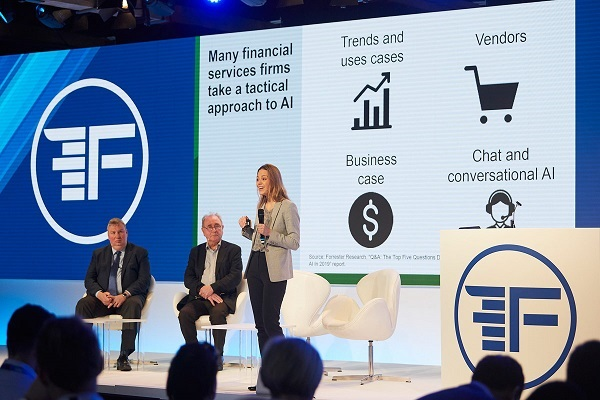Predicting the future of different markets has long been a goal of those in the financial world. Whether looking at equities, commodities, derivatives or now, cryptocurrencies, there’s no lack of analysts looking to make the most informed moves today to be prepared for tomorrow. Regardless of whether we’re interested in the short term or the long haul, there’s always a need to build effective models for predicting the future.
However, as the fintech industry continues to evolve, so to do the tools analysts use for forecasting. With the market expanding and beginning to mature, big data is now being used to gain insights about the future of the cryptocurrency market, which is projected to grow to USD 6.70 billion by 2025 at a CAGR of 31.3% during the forecast period. Here is how big data is now being used to gain insights about the future of the cryptocurrency market!
Cryptocurrency exchange data
With cryptocurrencies continuing to grow more mainstream, there are now a large number of online cryptocurrency exchanges to choose from. Not only are there more exchange services, but the exchanges investors and traders use are more advanced, user-friendly, and secure than those available during the earliest days of the bitcoin movement.
Besides being important for investors, these exchanges also generate an incredible amount of data that can be used. With high daily volume, these exchanges provide big data opportunities for those collecting, organizing, and analyzing it. Open orders, price history, transaction and volume data are all important factors used by analysts and AI for predicting price movements for crypto assets; however, it’s not the only thing they look at.
Social data
Along with data from various cryptocurrency exchanges, financial forecasters look to the world of social media to help in their analysis. For the cryptocurrency markets, in particular, social media plays an especially large role in price movements. Due to impactful events often being first announced and interacted with via social media and the demographics of who is interested in cryptocurrencies also having a heavy presence across various social media platforms, valuable data can be taken from them.
Research from Stevens Institute of Technology recently confirmed the link between social media users and the price of bitcoin, noting two big takeaways (the second one may be a surprise to many). According to Feng Mai, a professor at Stevens Institute of Technology, the first takeaway was that social media did, in fact, play a role in bitcoin and other cryptocurrency prices. The second takeaway, however, noticed that it’s actually the “silent majority” who affect prices the most, with Mr. Mai noting that:
“Many of us probably intuitively believe this, but this was the first robust statistical finding to verify that social media and bitcoin prices are actually linked. Vocal users of social media may sometimes have a certain agenda, in this case hyping or boosting the price of bitcoin because they themselves have invested in it. So if most of the social messages around bitcoin are generated by people who are biased, the sentiments on social media may not actually accurately reflect the currency’s actual value. This was a big finding, and it does seem to prove that people are trusting the silent majority much more, perhaps because they do not seem to have an agenda.”
The research looked at the different impact social media posting had depending on who it was making statements online.
Big data in action
With big data coming to the cryptocurrency industry, it should come as no surprise that there are already examples of data being implemented to predict future price movements. New platforms and startups are harnessing the power of big data to make informed decisions about where the markets are heading.
For example, PredictionVC is a startup bringing both big data and artificial intelligence (AI) to the cryptocurrency markets. They’re working to build a platform that can aggregate data from across the web by looking at a wide array of cryptocurrency exchanges, social media channels, and crowdsourced data from the platform to gain insight on cryptocurrency price trends and analysis. Other examples include the likes of CryptoPredicted and CryptoForecast.
Because of the data-rich environment that cryptocurrencies provide with blockchain technology, big data can be leveraged not just for forecasting future price movements of cryptocurrencies, but for enhancing security as well. Due to the public nature of a cryptocurrency’s distributed ledger, all transactions on the network are recorded and can be analyzed to help identify suspicious behavior trends, bad actors and even the possibility of an upcoming “51% attack,” according to big data researchers and analysts.
Furthermore, the underlying technology powering Bitcoin and other cryptocurrencies, the blockchain, has further implications for the way data scientists and big data analysts arrange, store, and organize the large data sets they work with. Blockchain technology has proven useful as a storage infrastructure and projects like Filecoin, Sia, and many others are already working on finding the best solutions for storing vast sets of data that can be efficiently accessed.
Cryptocurrencies in banking
With all the advantages cryptocurrencies and blockchain technology have to offer the big data industry at large, it’s not surprising that the banking industry stands to gain from them as well. While cryptocurrencies continue to remain volatile, many banks and financial institutions aren’t likely to consider them as an investment asset any time soon. However, the technology behind cryptocurrencies is already being tested by financial institutions to handle international remittances.
Blockchain technology and cryptocurrencies allow for fast, low cost, and simple international payment processing to anyone, anywhere, regardless of borders. Ripple Labs, the creators of the XRP token, are working with large banks like PNC to use cryptocurrencies for enabling cross-border payments quickly without the need for relying on the Swift network. Instead, banks are testing transactions using a cryptocurrency on RippleNet to allow instant international payments.
The bottom line
Besides offering insight on consumer spending habits, improving a company’s marketing strategy, and a whole host of other uses, big data is making a heavy impact on the financial sector as well. Combined with AI, big data is an incredible resource that analysts are able to turn into a tool for making more informed forecasts for the future of not only cryptocurrencies but other markets as well. In fact, while the big data movement is really gaining traction now, this isn’t the first time data scientists have looked to exchange data to model future price changes.
As early as 2014, computer scientists Massachusetts Institute of Technology (MIT) have been using vast swaths of data from various cryptocurrency exchanges to predict the movement of bitcoin and doing so quite successfully. In under two months, MIT’s CSAIL/LIDS team were able to double their initial investment. The only question remaining now is how much more effective will data scientists and AI be in the future?























